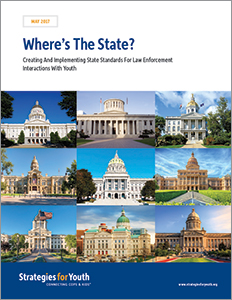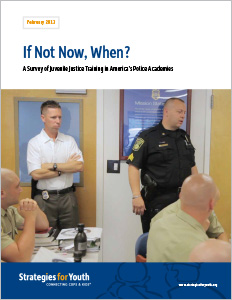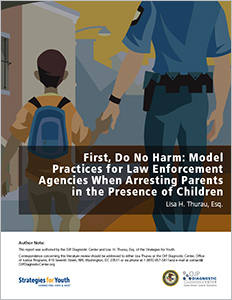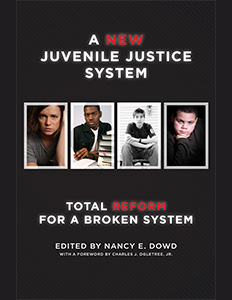Where Is The State? Creating and Implementing State Standards for Law Enforcement Interactions With Youth

In professions where adults are in regular contact with children–such as health care, education, and day care—the state is heavily involved in setting and enforcing clear standards. Law enforcement officers are the gatekeepers for the justice system. They determine who is arrested, who is not, and who enters into the juvenile justice system and these decisions can dramatically and permanently alter a youth’s educational and professional opportunities. Given the magnitude and long-term impact of encounters between youth and law enforcement, there is no reason why law enforcement agencies and officers are not subject to the same levels of accountability, training and guidance.
If Not Now, When? A Survey of Juvenile Justice Training in America’s Police Academies

In professions where adults are in regular contact with children–such as health care, education, and day care—the state is heavily involved in setting and enforcing clear standards. Law enforcement officers are the gatekeepers for the justice system. They determine who is arrested, who is not, and who enters into the juvenile justice system and these decisions can dramatically and permanently alter a youth’s educational and professional opportunities. Given the magnitude and long-term impact of encounters between youth and law enforcement, there is no reason why law enforcement agencies and officers are not subject to the same levels of accountability, training and guidance.
First, Do No Harm: Model Practices for Law Enforcement Agencies When Arresting Parents in the Presence of Children

This report outlines key model practices law enforcement agencies can use to safeguard children from the long- and short-term impacts of being present when a parent is arrested.
Applying JDB v. North Carolina: Towards Ending Legal Fictions & Adopting Effective Police Questioning of Youth

A New Juvenile Justice System aims at nothing less than a complete reform of the existing system: not minor change or even significant overhaul, but the replacement of the existing system with a different vision. The authors in this volume—academics, activists, researchers, and those who serve in the existing system—all respond in this collection to the question of what the system should be. Uniformly, they agree that an ideal system should be centered around the principle of child well-being and the goal of helping kids to achieve productive lives as citizens and members of their communities.



